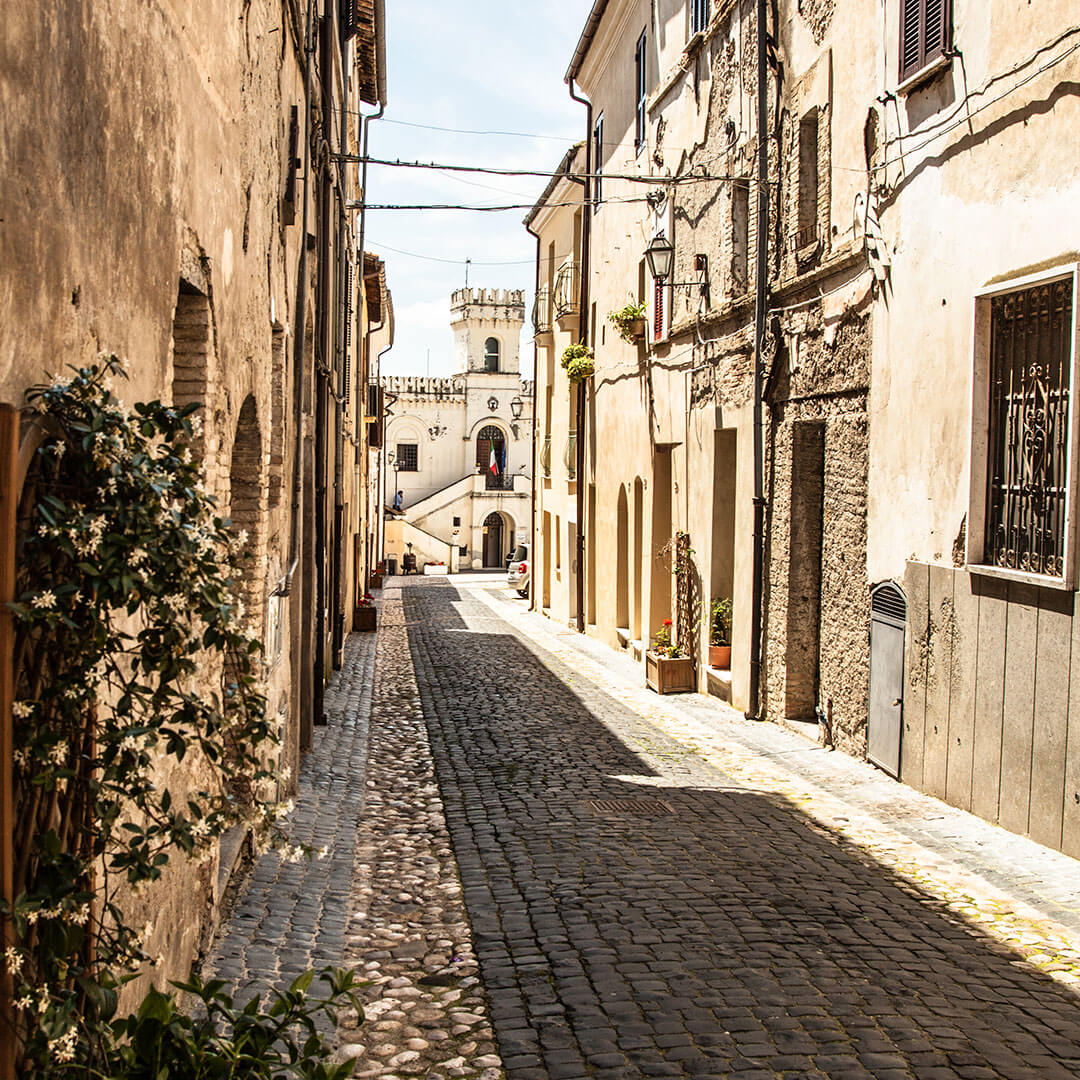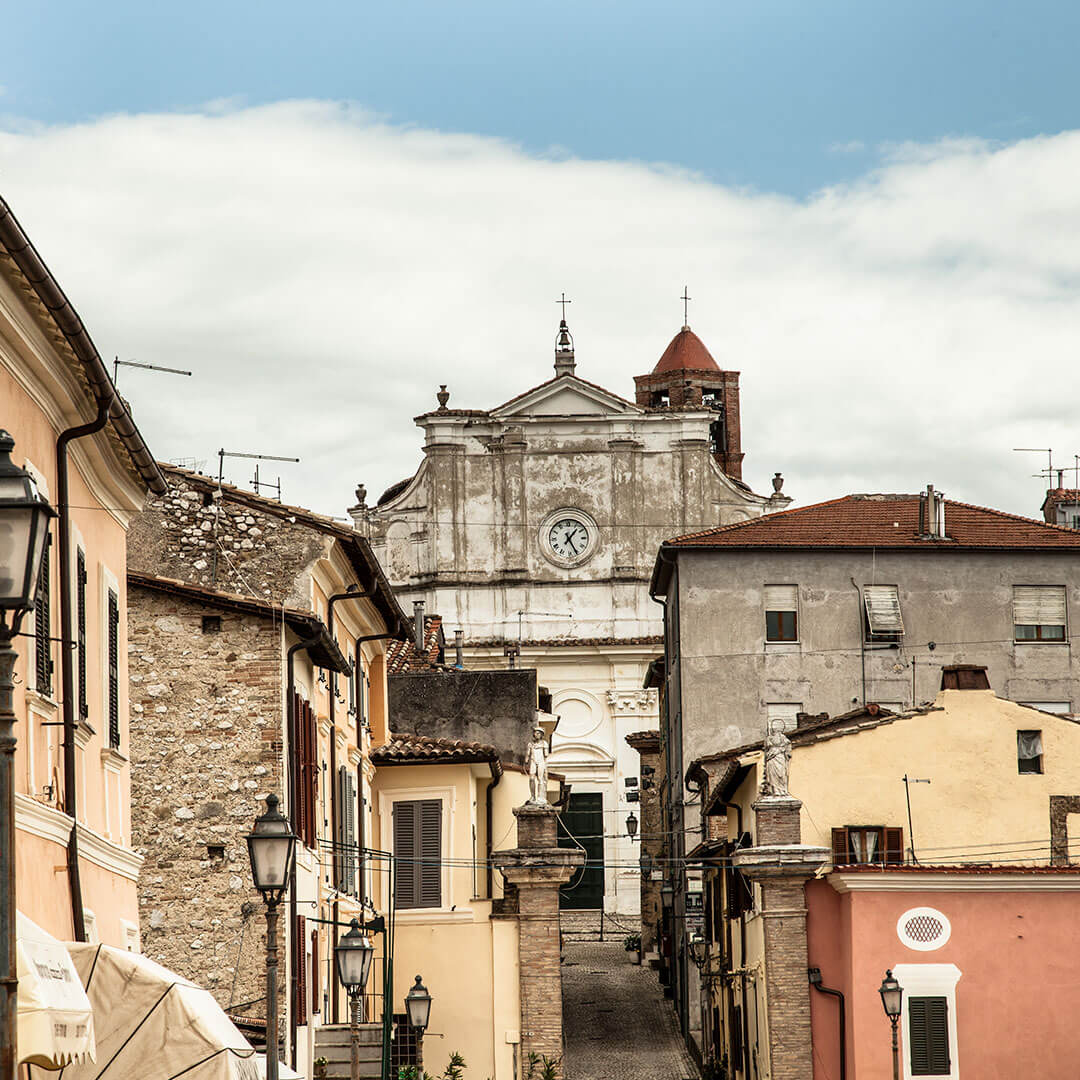The ''Region'' Sabina
About 40 kilometers northeast of Rome, the Sabina area, located between Latium, Umbria and Abruzzo, is an area rich in tourist attractions ranging from unspoiled nature to medieval villages, passing through a rich artistic, historical and cultural heritage. Not yet invested by mass tourism, this region offers a genuine hospitality and boasts gastronomic excellence, such as PDO olive oil,and fascinating landscapes.
One of the most attractive aspects of Sabina is its variety of attractions, which include ancient medieval villages and castles, such as Casperia and Montopoli, as well as natural sites such as the Tever-Farfa Park. This diversity makes the region attractive to a wide range of tourists, from seekers of tranquility to fans of outdoor activities.
The geography of the region had a significant impact on the development and history of the area. The numerous medieval settlements reflect an unusually high population density for the period, due to various factors, including defense. Many medieval villages are situated on spurs or hilltops, ideal places for easily defensible buildings. The mild climate and abundance of water made agriculture easier and more profitable, contributing to the prosperity of the area and the maintenance of a high population. Forests also played an important role in the local economy. Higher settlements were preferred to avoid winter fogs and to enjoy cool, breezy weather in summer.
Today, however, priorities are changing, and the higher historic centers are facing the challenge of depopulation, with many villages having only a few hundred inhabitants. In contrast, there has been modern development in the valley bottoms and lower parts of the area, attracted by proximity to road and rail links, including those working in Rome. It is hoped that responsible tourist development, the growing importance of telecommunications, and the determination of the inhabitants can save these more remote villages from complete abandonment in the future.
This setting offers a detailed and engaging view of Sabina, an area that retains its historical and natural charm while facing the challenges of the modern world. Its rich history, enchanting landscape, and vibrant culture make it an ideal place for the development of sustainable and respectful tourism that can enhance and preserve the region’s uniqueness.


History and Territory
The Sabine people, who came from the Adriatic coast, settled around the 10th-9th century BC. in the Lazio region north-east of Rome, in centers such as: Reate (Rieti), Amiternum (near L’Aquila), Nursia (Norcia), Fidenae, Cures, Nomentum (Mentana). There are numerous references in the historical tradition of the Sabine participation in the foundation of Rome, such as the famous episode of the rape of the Sabines, partially confirmed by linguistic elements, for which it is not possible to doubt the participation of the Sabines in the initial synecism of Rome. In 290 BC Curio Dentato conquered the whole Sabine territory, reducing the population to cives sine suffragio, until in 268 BC. they obtained full citizenship being gradually absorbed by the Roman state. A few years later, the Roman consul himself was responsible for the first drying up of the Rieti marshy plain with the opening of the “Curian quarry” which gave rise to the “Cascata delle Marmore”.
After a strong earthquake in 174 BC, the rise of numerous Roman villas in Sabina testify to a change in the reorganization of the territory and agriculture. They were called villae rusticae, such as “i Casoni”, a Roman villa attributed to Varrone, built near today’s Poggio Mirteto. Around the second century BC, the spread of Christianity was marked by a series of important signs: catacombs, churches, chapels. Evidence of this in the Sabina can be found in the ruins of the ancient Roman municipality of Forum Novum, in the locality of Vescovio, in the territory of Torri in Sabina, built at the intersection of two secondary roads that connected the new center with the Via Flaminia and the Via Salaria. .
Of particular interest is also the cathedral built in the vicinity of the Forum dating back to the same period of construction of this one. The pictorial cycle created that marks the side walls is noteworthy. On the right side there are scenes from the Old Testament, some of which have become almost illegible today. On the left wall, moments from the new testament are represented. The interior, with a single nave, has not been distorted by renovations in the modern age due to the loss of importance of the diocesan seat itself moved to Magliano Sabina.
Livy and Dionysius of Alicarnassus recall wars between the Sabines and the Romans in the royal and republican period, until, in 449, Rome, winning a definitive victory, occupied Cures, Nomentum and Fidenae.
In the Lombard period, the Sabina was instead divided between the duchies of Rome and Spoleto. The foundation of the Farfa Abbey dates back to the sixth century, with the spread of Christianity and monasticism, which, together with the adjoining monastic buildings, were completely destroyed by the Lombard invasion. Under Abbot Ugo I ° the abbey went through a shining historical period protected by the Carolingians, primarily by Charlemagne. Around the abbey, thanks to the work of the monks who followed the rule of St. Benedict, an active village of artisans and peasants developed in order to sell their products in the frequent fairs that took place in Rome.
In the twelfth century the Sabina, with the decline of the power of the Abbey and the continuous affirmation of the dominion of the Papal State, saw powerful feudal families such as the Savelli, the Orsini and the Colonna settle in this area. In 1861 it was unified with Umbria and only in 1923 was it re-united with Lazio, then constituting, in 1927, much of the new province of Rieti.





